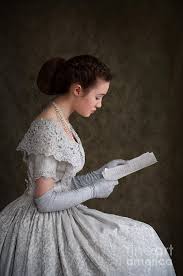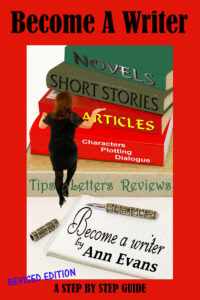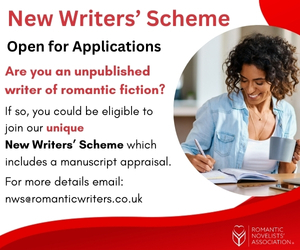Hints & Tips For New Writers #3
24 June 2020
 Today’s hints & tips are all about making sure readers keep on reading! And one way of doing that is by making good use of that little writing ploy – the cliffhanger.
Today’s hints & tips are all about making sure readers keep on reading! And one way of doing that is by making good use of that little writing ploy – the cliffhanger.
An editor at Scholastic once told me I was the Cliffhanger Queen! I was delighted!
When you end a chapter or even a scene, that gives the reader chance to close the book and go and do something else. And if you’ve rounded that chapter or scene off really well, they might just forget to come back to your book to see what happens next.
So my thoughts on chapter and scene endings, is to leave the readers at a point where they just have to read on – never mind that it’s 2am and they’ve got to get up at 6am, they need to read just one more chapter… As scholastic was publishing my children’s books, I imagine that a few mums were cursing me when their kids were still reading under the bedclothes with a torch after lights out.
My belief in ending chapters on a cliffhanger holds true regardless of whether you’re writing children’s stories, thrillers, chillers, romance or any other genre. The aim is the same – keep them reading!
How you end those scenes can be as subtle or as dramatic as you like. But I thought you might enjoy this far-from-subtle cliffhanger which comes at the end of Chapter 8 in my first ever published book, Cry Danger where my protagonist is left dangling, literally, from a rope over a cliff.
She felt dizzy. She started to sway. Her fingers began to loosen their grip on the rock. A hot black swampy feeling crawled over her head.
Don’t faint… Don’t faint…
Above her, people were yelling, shouting advice…
“Sophie, don’t look down. Hang on, Sophie, Sophie, be careful.”
And then one voice shrieking above all the hubbub and commotion. Ami’s voice. Ami – hysterical. “The rope!” Ami was screaming. “The rope! It’s come off the anchorage point. Mr Meredith, don’t let go, you’re the only one holding her!
The black swampy feeling closed over Sophie’s head and as her fingernails scraped one final time against the rock, she felt herself falling… falling… falling…
Not every story has a cliff and a protagonist who’s a rubbish rock climber – Oh and incidentally, earlier in the plot, Sophie had mentioned being scared of heights. And to add to the fun, she didn’t trust that Instructor Mr Meredith one little bit!
But time to be a little more subtle about those chapter endings. I think it helps if you plot – or at least know what you want to achieve in each scene or chapter. If you’re planning ahead you can write each scene with its starting point, its middle where things are happening and emotions are heightening, and finally coming to a head at the end of that scene or chapter.
But as mentioned, try not to totally round it off. If your plot allows, take it to its highest point and then stop. If you have another viewpoint character, it’s the perfect time to write through their eyes, or switch to another thread in the story. Keep the reader hanging on wanting to know what’s going to happen.
When a particular scene in the story does need to be concluded, still try and avoid it being too final. This can be done with a final sentence, even a final word, or a final thought in your viewpoint character’s head – particularly when it reveals the emotional turmoil they are feeling at that moment. It’s just that little something that stops the reader from feeling too complacent about the situation.
Scene and chapter endings
Here’s a few final scene/chapter sentences in my romance A Place to Belong where that part of the story was concluded. My ploy then was to write a final sentence that shows the heroine or hero swamped with emotion.
…Jude allowed himself to dream – and to hope.
… and deep inside him that spark of desire reignited and began to flare.
… He was an insensitive, self-centred womaniser. She hated the man.
… and for the first time that day, attempted a small smile – it failed miserably.
And at the end of a particularly happy scene where Lily has been wrapped in Jude’s arms as they rode the huge carthorse back to the manor house, I couldn’t let her simply get off the horse, blow him a kiss and skip off for tea and crumpets. No, at the point of her feeling ecstatic I made sure she remembered who this guy actually was: Jude Mitchell – alas, her dear friend Prudence’s suitor. I could have ended it there. But it was far better to turn the screw and add a final important sentence: Her happiness plummeted.
Remember…
- Plan your scenes so that the most dramatic moment can come at a point where you can break off for a new chapter.
- A new chapter may provide fresh momentum, or you may choose to keep your readers on tenterhooks while you deal with another thread of your story. Maybe that too can be brought to boiling point.
- At the end of chapters, leave your character in a precarious position emotionally, physically or both.
- Remember, try not to round everything up perfectly at the end of a chapter. Don’t give your readers the chance to put your book aside.
So have fun with your cliffhangers. Whether your character is dangling from a rope over a cliff or struggling to resist the hero’s charms, think very carefully how you end each scene and each chapter. Keep them reading!
Stay safe and happy writing everyone
Ann
 Ann Evans writes romance under the name of Ann Carroll, she also writes thrillers, books for children, YA and reluctant readers. She is also a freelance feature writer for various magazines.
Ann Evans writes romance under the name of Ann Carroll, she also writes thrillers, books for children, YA and reluctant readers. She is also a freelance feature writer for various magazines.
Website: www.annevansbooks.co.uk
Facebook: https://www.facebook.com/annevansbooks/
Twitter: https://twitter.com/annevansauthor

Find more writing tips in Ann Evans’ book, Become a Writer – a step by step guide.
https://amzn.to/3487fws



